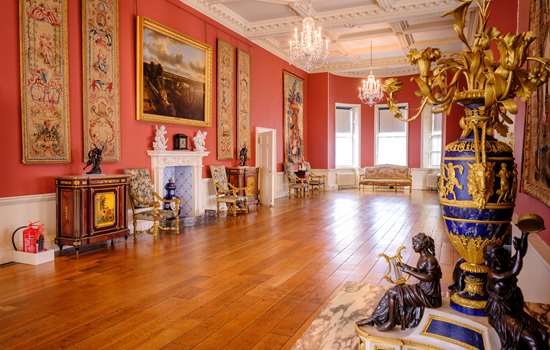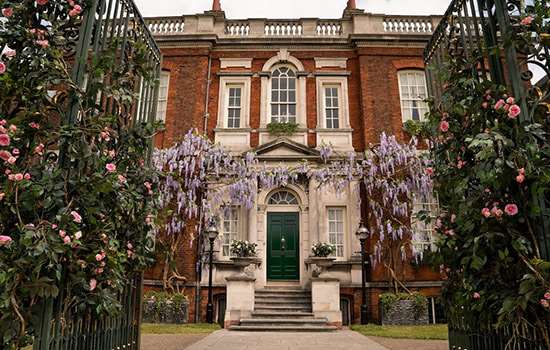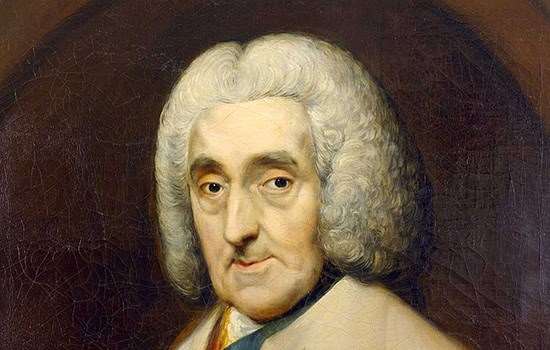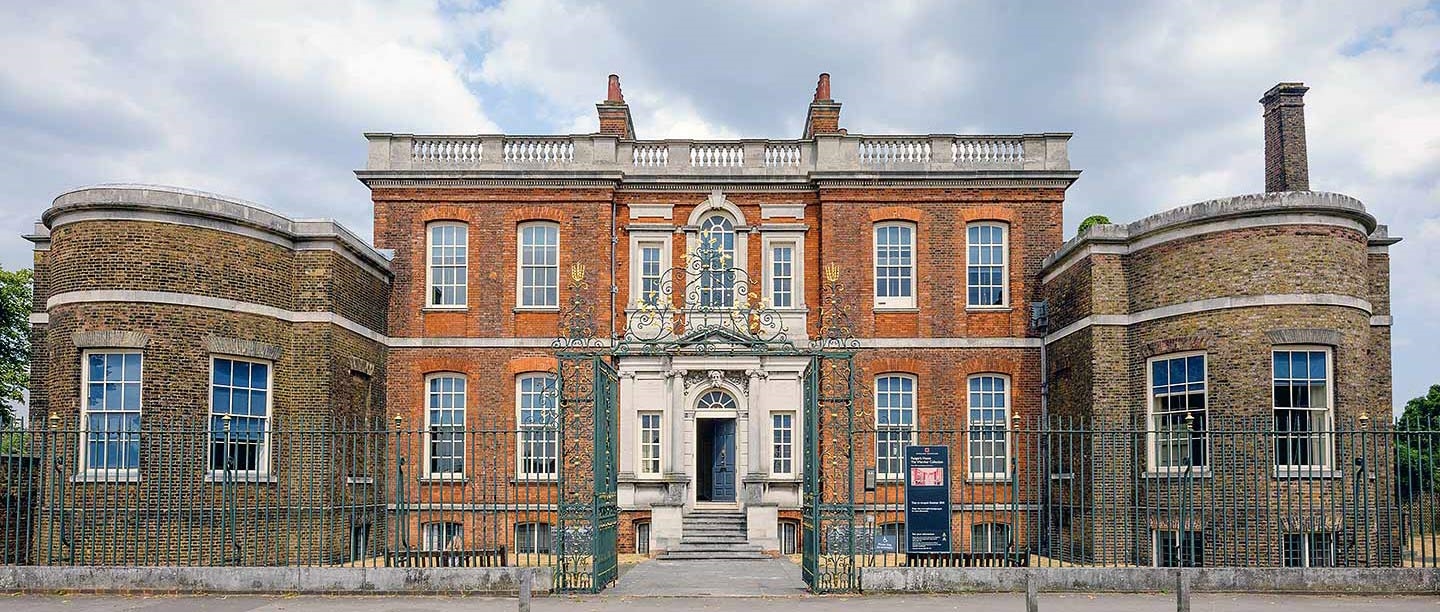Princess Augusta
Princess Augusta, later the Duchess of Brunswick, was the eldest of the eight children of Frederick, Prince of Wales, and Augusta, Princess of Wales. Born in 1737, she grew up at Leicester House, London, and spent time at the royal residences of Kew and Cliveden. After Frederick’s death in 1751 the family led an increasingly secluded life, his widow being anxious to protect Augusta’s younger brother George, who was now heir to the throne. He ascended the throne as George III in 1760.
Just over three years later, aged 26, Augusta married Charles Frederick William, hereditary prince of Brunswick-Wolfenbüttel (in present-day Germany). This was a dynastic match aimed at maintaining the historic family ties between the House of Hanover (the ruling family of Britain) and the House of Brunswick.
At first Augusta wrote with great satisfaction of her new husband: ‘his heart is good & he could not vex anybody’. However, she seems never to have fully embraced her new home or, as she had observed on her first arrival, the ‘odd figures & manners of these people’. Although they had seven children together, Charles and Augusta’s marriage was ultimately unhappy. Charles was impatient with Augusta’s desire for retirement and seclusion, and was unfaithful to her. By 1765 they were reported as ‘living very ill together’.
Return to England
Augusta spent next to no time in England during her married life. But as Napoleon extended his reach across continental Europe, she was forced to flee to England in the summer of 1807, at the age of 70. Her husband had been fatally wounded at the Battle of Jean-Auerstedt in October 1806 when commanding the Prussian Army against the French, and Napoleon – that ‘vile Corsican usurper’ as Augusta called him – subsequently occupied Brunswick.
In letters to her brother George III, Augusta described her fears for her safety: ‘Being an English woman,’ she wrote, ‘they would willingly have me in their power.’ To add to her afflictions, her money in Brunswick was ‘in the power of the French’.
Augusta found relief from immediate danger with her niece in Denmark, before George approved her request to travel to England. On 7 July 1807 she arrived at Gravesend in Kent and, after a royal salute was fired from across the Thames at Tilbury Fort, proceeded to Blackheath.
She initially stayed with her second daughter, Caroline, Princess of Wales, at Montagu (or Montague) House. Within days of her arrival her granddaughter Princess Charlotte and her brother the king had visited. On 13 July she met her sister-in-law Queen Charlotte, together with the king and most of the royal family, travelling with Caroline in an open landau to Buckingham House (later Buckingham Palace), for ‘sumptuous refreshment’ served in the grand hall. Her niece, Princess Elizabeth, wrote of the gathering: ‘everything gone off to our wishes; no one unpleasant thing mentioned’. One such source of potential unpleasantness was the scandal surrounding Princess Caroline.
A ‘delicate investigation’
In 1795 Caroline had married her cousin George, the Prince of Wales, later George IV. From the outset the prince showed little interest in his new bride. This was perhaps unsurprising. He had already married Maria Anne Fitzherbert (then living at Marble Hill), in a ceremony deemed illegal, and had a new favourite in Frances Villiers, Countess of Jersey. To add to this, his principal incentive for marrying was the promise that debts accumulated through his extravagant lifestyle would be settled, and his allowance increased.
On first meeting Caroline, the prince immediately called for brandy and later expressed his disgust at the princess’s indiscreet and coarse manners at dinner. ‘This unfortunate dinner fixed his dislike’, wrote a contemporary observer, and this later grew into ‘positive hatred’ – probably exacerbated by the fact that his financial expectations of the marriage were not met.
Augusta’s concern for her daughter’s wellbeing is evident in letters to her brother referring to the ‘poor Princess’ and her ‘unhappy daughter’, and asking him to protect and indulge her. After Charlotte, Caroline and George’s only child, was born in 1796, the couple led increasingly separate lives.
In 1797 Caroline leased Montagu House, which became her main home. In 1806 the king granted her the honorary position of Ranger of Greenwich Park. Montagu House became her official residence and the whole park and its buildings were put at her disposal.
At Blackheath she entertained in an unreserved, playful and at times ill-advised manner. Her overfamiliar behaviour with male visitors eventually became the subject of the so-called ‘delicate investigation’ commissioned to address rumours of infidelity and an illegitimate child. Although the allegations were found to be untrue, the investigation condemned her conduct with certain men among her company, and her ‘improper levity’.
Mother and daughter
It was in this context that, when pleading her case to come to England in 1806, Augusta wrote to her brother that her ‘daughter’s whole happiness seems to depend on my being with her’. But as the duchess’s nephew the Duke of Clarence speculated, with no small hint of sarcasm when referring to his cousin’s virtue:
If I know the Dutchess at all she will be the least welcome visitor to her wise and virtuous daughter. The Report of the Commissioners will have a very severe effect on the Dutchess whenever she is in possession of it, and believe me, the frail fair one at Blackheath will shudder at the sight of her mother if she comes over.
Sure enough, it wasn’t long before the joint living arrangements of Augusta and Caroline at Montagu House appear to have placed a strain on their relationship. The princess wrote after a month of living together that there was ‘not much gene and etiquette between us … each like to live her own way’. The duchess chose to rise early, and the princess was seldom seen before two o’clock. The princess also railed against her mother. They had not lived together since her marriage aged 26, and since childhood Caroline had longed for freedom from her mother’s strict supervision.
Brunswick House
By September 1807, and after the king had increased her pension, the duchess moved next door to what is now Ranger’s House (then known as Chesterfield House). Her new home became known as Brunswick House. She wrote of her purchase to her brother: ‘I have bought Lord Chesterfield House … in ten days I shall be in possession of it, & hope to give you a dinner of all the German dishes you like.’
In 1808 The Lady’s Magazine reported that the house underwent a ‘complete repair’ before Augusta moved in and was ‘now spacious, elegant and uniform’, with the facade ‘beautifully embowered by two rows of stately trees’. Together with the lease of the house, Augusta seems to have bought its furnishings from the previous owner, which she added to during her residency. A sale catalogue after her death also reveals that she had an extensive collection of paintings at her home.
Augusta and Caroline’s homes were connected by a ‘private communication between them’, and to ensure their privacy, parts of Greenwich Park which the houses backed onto were enclosed.
An unguarded nature
Throughout her life, the duchess was noted for her unguarded nature, abrupt manner and fondness for gossip, as well as her ‘high spirits’, kind heart, ‘upright’ nature and ‘candour and sincerity’. She never refrained from sharing her opinions of others – indeed her own husband noted that she was ‘apt to forget her audience’.
James Harris, Earl of Malmesbury, recorded one of her characteristically unguarded conversations with him in 1794, when she spoke of the queen’s ‘envious and intriguing spirit’ (the relationship between queen and duchess seems to have been difficult at times). She praised the kindness of the king – with whom she shared a close bond – though ‘twenty years absence, and thirty years living with the Queen, had made him forget her’. Nothing, Malmesbury wrote, could be ‘so open, so frank, and so unreserved, as her manner, nor so perfectly good-natured and unaffected’.
It was this nature which perhaps earned Augusta a reputation for gossip or ‘chattering every-where’, endearing her to some and alienating others. Hedvig Elisabeth Charlotte, Princess of Sweden, wrote in 1799: ‘She makes the strangest questions without considering how difficult and unpleasant they can be.’ Her strength of feeling and, at times, plain speaking seems never to have left her. At a dinner in July 1807, she pointedly declared ‘her perpetual dislike of all Germans’.
Entertaining
Contemporary newspapers record many royal and aristocratic visitors to Ranger’s and Montagu House. An invitation to a party hosted by royals would have been greatly sought after, though one given by Princess Caroline – in perpetual battle with her husband, who resented her popularity – might imply a choice of allegiance. Caroline established a rival court at Blackheath and her lodgings at Kensington, where she spent much of her time between 1808 and 1811.
At Ranger’s Augusta hosted large and elegant dinner parties and a ‘grand public breakfast’ in 1808, as well as more select gatherings, while her daughter held countless dinners and occasional grand entertainments next door. These occasions could be vast in scale, and one – ‘the Princess of Wales’s Grand Fete’ in June 1808 – took in parts of both houses. Guests went from Montagu House via ‘a covered way of one hundred yards, supported by gothic arches, the sides covered with oak and shrubs, illuminated with a profusion of lamps’ to the ‘fifth supper room’ of the occasion at ‘her Royal Mother’s the Duchess of Brunswick’. The ‘covers were laid for nearly one hundred’ and the table was lavishly decorated.
Two months later, the princess hosted a celebration of her mother’s birthday. It was described as ‘the most splendid and elegant entertainment that has been witnessed during the present season’.
Family life
As well as larger scale entertainments, at Blackheath the duchess seems to have enjoyed activities such as reading or riding her carriage through the park pulled by her resident donkey. Caroline sarcastically wrote that his ‘thrilling voice wakes me every morning’.
Augusta also entertained many family visitors, including the queen and some of her children. Among her frequent visitors were her daughter Caroline, her granddaughter Charlotte and her son Frederick William, Duke of Brunswick, after his arrival in England in 1809. Sylvester Douglas, Baron Glenbervie, describes a pattern which had established itself in 1808: ‘Every Wednesday and Sunday there is a diner prié at Montagu House, at which the Duchess of Brunswick is always one, and on Thursdays the Princess always takes her first dinner with her mother’.
Her mother’s home also provided an approved location for Caroline to see her daughter, from whom she lived apart after her estrangement from the Prince of Wales. Where she was allowed to see her daughter and for how long was a constant battleground. In 1801 Augusta wrote that it was the ‘bitterest pill for a mother to digest … not to have her under her roof’. After the ‘delicate investigation’ of 1806 Caroline’s access to Charlotte, then 11 years old, became increasingly difficult, but for some time at least they were able to meet weekly at Augusta’s house.
Caroline wrote in 1807:
On Saturdays my daughter comes at three o’clock to dine with my mother, when company is always asked to meet her, consisting of old and steady people. At four o’clock I appear; at six Charlotte leaves us, and I then make the part of my mother till eight.
Princess Charlotte described the company of the ‘old and steady people’ at Ranger’s as a ‘dullification’, and she also fell foul of Augusta’s straight talking. In October 1811 she wrote to a friend after a visit to Blackheath: ‘the old lady was not in a good humour & that all she said was, “You are grown very fat & very much sunburnt.” This she said 3 or 4 times at & after dinner.’
After the prince became regent in 1811 Charlotte’s visits to her mother were further limited, and Caroline became marginalised from much of society, as people were forced to choose between the future king and his estranged wife.
Augusta died in March 1813 of an ‘asthmatic complaint’ at her central London home in Hanover Square. On her death Queen Charlotte wrote to the Prince of Wales speculating that the duchess’s death was ‘hurried’ by suppressing her feelings upon ‘distressing & unfortunate family affairs’, in particular the ‘delicate investigation’. This, she wrote, she never spoke of to anyone.
Despite their at times turbulent relationship, the papers reported that Caroline arrived just in time to receive her mother’s last blessing and to share a last embrace. Arrangements for Augusta’s funeral were made by the queen and prince regent in consultation with the duchess’s son the Duke of Brunswick, who was the chief mourner. She was buried at St George’s Chapel in Windsor Castle on 31 March 1813.
In 1814, as tensions with the Crown increased, and given a financial incentive by Parliament, Caroline left Blackheath for the continent. She returned to England after George became king in January 1820. In an attempt by him to dissolve their marriage and strip her of her position, she was put on ‘trial’ for adultery in the House of Lords, but with public opinion strongly favouring Caroline the trial was eventually abandoned. When Caroline tried to attend the king’s coronation in July 1821 she suffered the indignity of being turned away, and died just 18 days later.
After Caroline had left Blackheath, Montagu House, deemed to be badly built and poorly planned, was demolished. But the royal connection to the area and Ranger’s House continued. In 1815 Augusta’s niece, Princess Sophia Matilda, daughter of the Duke of Gloucester, took up residence at Ranger’s House, which became the official ‘grace and favour’ residence for the Rangers of Greenwich Park.
Full of drama, the Duchess of Brunswick’s life has close ties with those portrayed on screen in Bridgerton and Queen Charlotte – and could justify a television series of its own.
Find out more about Ranger’s House
-

Visit Ranger’s House – The Wernher Collection
Discover a diamond magnate’s fabulous jewels
-

Where was Bridgerton filmed?
Ranger’s House plays a starring role in Netflix’s popular television series Bridgerton. How similar is the house to the way it’s presented in the series?
-

Ranger’s House and Admiral Hosier’s Ghost
Find out why the death of Admiral Francis Hosier, the first resident of Ranger’s House, and the devastation of his fleet, became the subject of a scathing musical attack on the government of the day.
-

Lord Chesterfield at Ranger’s House
Philip Dormer Stanhope, 4th Earl of Chesterfield, politician and famed letter-writer, was the most celebrated owner of Ranger’s House. Find out more about him and his life there.
Further reading
Edmond Fitzmaurice, Charles William Ferdinand, Duke of Brunswick: An Historical Study, 1735–1806 (London, 1901) (accessed 4 Oct 2023)
Flora Fraser, The Unruly Queen: The Life of Queen Caroline (London, 1997)
Anne French, Ranger’s House (English Heritage guidebook, London, 1992) (buy the guidebook)
Janice Hadlow, The Strangest Family: The Private Lives of George III, Queen Charlotte and the Hanoverians (London, 2014)
Oxford Dictionary of National Biography entries for Princess Charlotte Augusta, Caroline [Princess Caroline of Brunswick Wolfenbüttel] and George III (public library subscription required) (accessed 4 Oct 2023)
Royal Collection Trust, ‘Augusta, Duchess of Brunswick, and Family’ (accessed 4 Oct 2023)
Lady Rose Weigall, A Brief Memoir of the Princess Charlotte of Wales (London, 1874) (accessed 4 Oct 2023)
Original sources
A Aspinall, Letters of the Princess Charlotte, 1811–1817 (London, 1949) (accessed 4 Oct 2023)
A Aspinall, The later correspondence of George III (1962), vols 1–5
‘Biographical Sketches of Illustrious Ladies: the Twenty fifth number’, Bell’s Court and Fashionable Magazine (Dec 1807), 290–92
Francis Bickley (ed), The Diaries of Sylvester Douglas (Lord Glenbervie) (London, 1928), vol 2
Charlotte Campbell Bury, Diary illustrative of the times of George the Fourth, interspersed with original letters from the late Queen Caroline, and from various other distinguished persons, vol 1 (Paris, 1838) (accessed 4 Oct 2023)
‘Description of the Duchess of Brunswick’s Villa, Blackheath’, The Lady’s Magazine (Supplement 1808), 571 (accessed 4 Oct 2023)
James Harris, 1st Earl of Malmesbury, Diaries and Correspondence of James Harris, first Earl of Malmesbury, ed James Howard Harris, vol 3 (London, 1844) (accessed 4 Oct 2023)
Derek Jarrett (ed), The Yale Edition of Horace Walpole’s Memoirs (London, 2000), vol 2
Many of the letters between Augusta, Duchess of Brunswick and her brother George III can be read for free online through the Georgian Papers Programme: Georgian Papers Online
